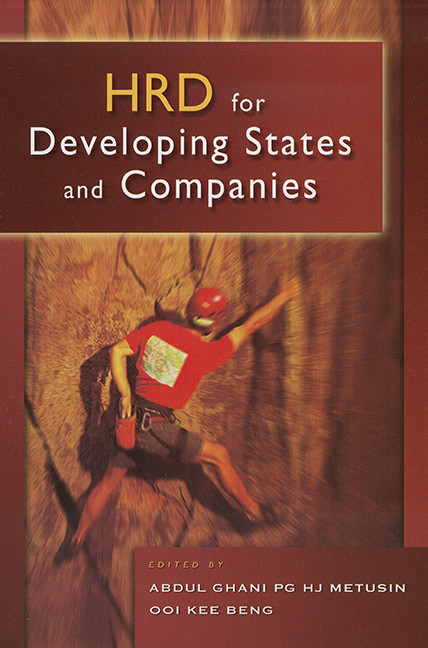Book contents
- Frontmatter
- Contents
- Foreword
- Preface
- Editorial Remarks
- Acknowledgements
- Introduction
- HRD for Statesmen
- HRD Strategies for Companies
- Competence Development
- 13 Creating Sustainable Competitive Advantage Through People and Culture
- 14 Maximizing Workforce Efficiencies with Effective Change Management
- 15 The Rise of the High Performance Learning Organization
- 16 Performance Measurement and Management
- 17 Strategies to Help People Learn and Perform
- 18 Maximizing Talent for Maximizing Result
- 19 How Investing in Human Capital can Translate Positively into the Organization'sPerformance — The Role of Benchmarking
- Corporate Experiences
- About the Authors
17 - Strategies to Help People Learn and Perform
from Competence Development
Published online by Cambridge University Press: 21 October 2015
- Frontmatter
- Contents
- Foreword
- Preface
- Editorial Remarks
- Acknowledgements
- Introduction
- HRD for Statesmen
- HRD Strategies for Companies
- Competence Development
- 13 Creating Sustainable Competitive Advantage Through People and Culture
- 14 Maximizing Workforce Efficiencies with Effective Change Management
- 15 The Rise of the High Performance Learning Organization
- 16 Performance Measurement and Management
- 17 Strategies to Help People Learn and Perform
- 18 Maximizing Talent for Maximizing Result
- 19 How Investing in Human Capital can Translate Positively into the Organization'sPerformance — The Role of Benchmarking
- Corporate Experiences
- About the Authors
Summary
While evaluating factors that affect the effectiveness of training, we meet one of the main hurdles right upfront — in the classroom itself. It is hard to ignore the difference between the deep engrossment of a child in the midst of a discovery and the expressions of adult learners forced into training by corporate training plans and trapped by learning strategies that are out of place for adults.
To make learning exciting and meaningful for adult learners, Specialist Management Resources has used and promoted the FUN technique for over a decade now. FUN must balance content for results to show. FUN training, which is based on the 5 Is — Introduction, Involvement, Interaction, Instruction and Intensifying Retention — uses many techniques and tools that have enriched the tool kits of many trainers.
In this session, Karen, who has been coaching trainers and facilitators in the use of FUN techniques and tools, will present corporate best practices on the use of FUN in training. The session will use case studies to examine how the techniques have been adapted to suit varying audience needs.
Ever since the book The Magic of Making Training Fun by Dr R. Palan, author and international speaker, was published in 1998, we at Specialist Management Resources have made phenomenal changes in our approach to training. Fun tools and techniques have become key resources for supporting learning in our corporate and public programmes.
When we deliver training using the Fun Formula: Fun ×Content = Results, we have had great results. Fun is a catalyst and an enabler for learning. It is a vehicle for delivering content. It is based on the five principles popularly known as Palan's5Is.
INTRODUCTION
As with any event, how we begin our programme will determine how the rest of the session will measure up. The very first ten minutes can make or break a training session. A warm welcome with an activity-based opener can set the stage and pace for learning. Both learner and facilitator come together and begin to form a bond and rapport.
- Type
- Chapter
- Information
- HRD for Developing States & Companies , pp. 127 - 129Publisher: ISEAS–Yusof Ishak InstitutePrint publication year: 2005

